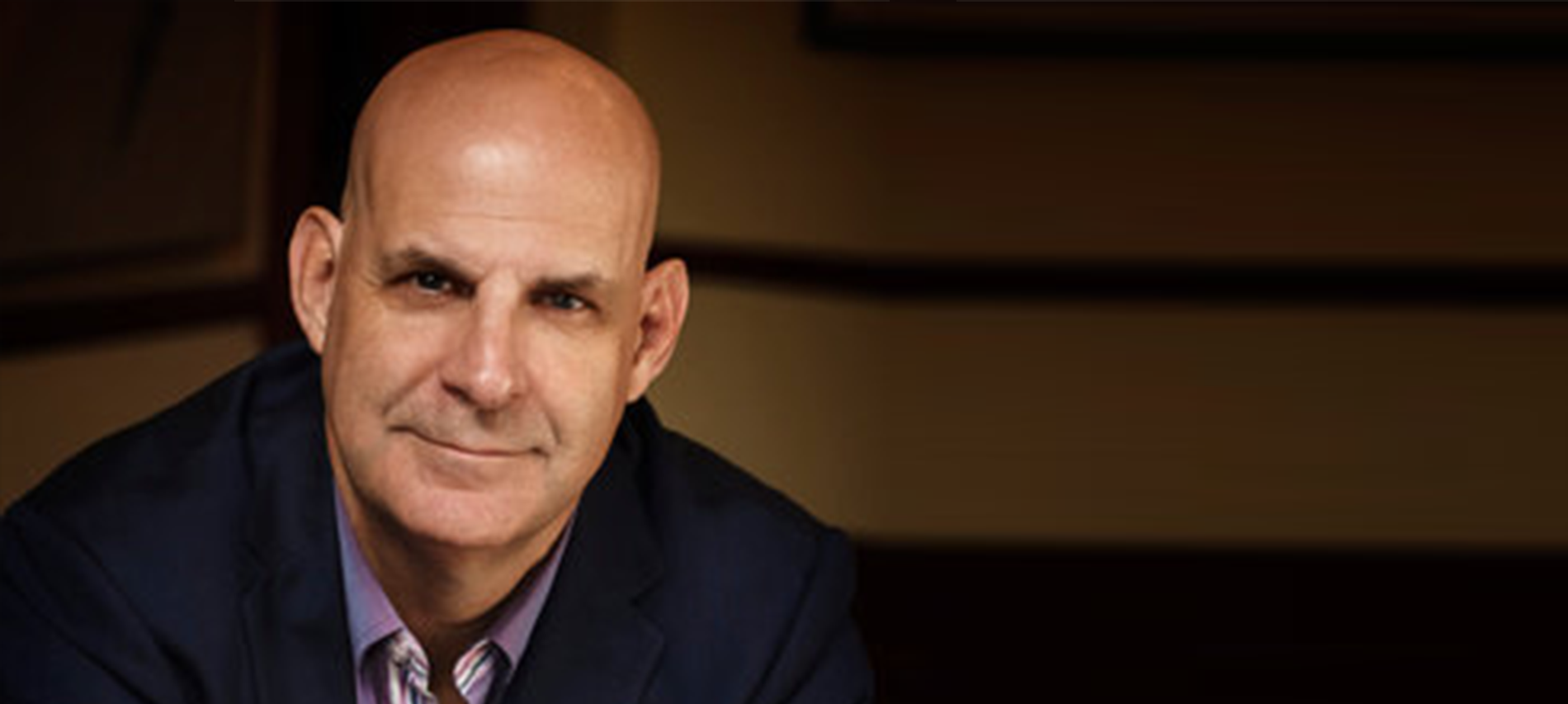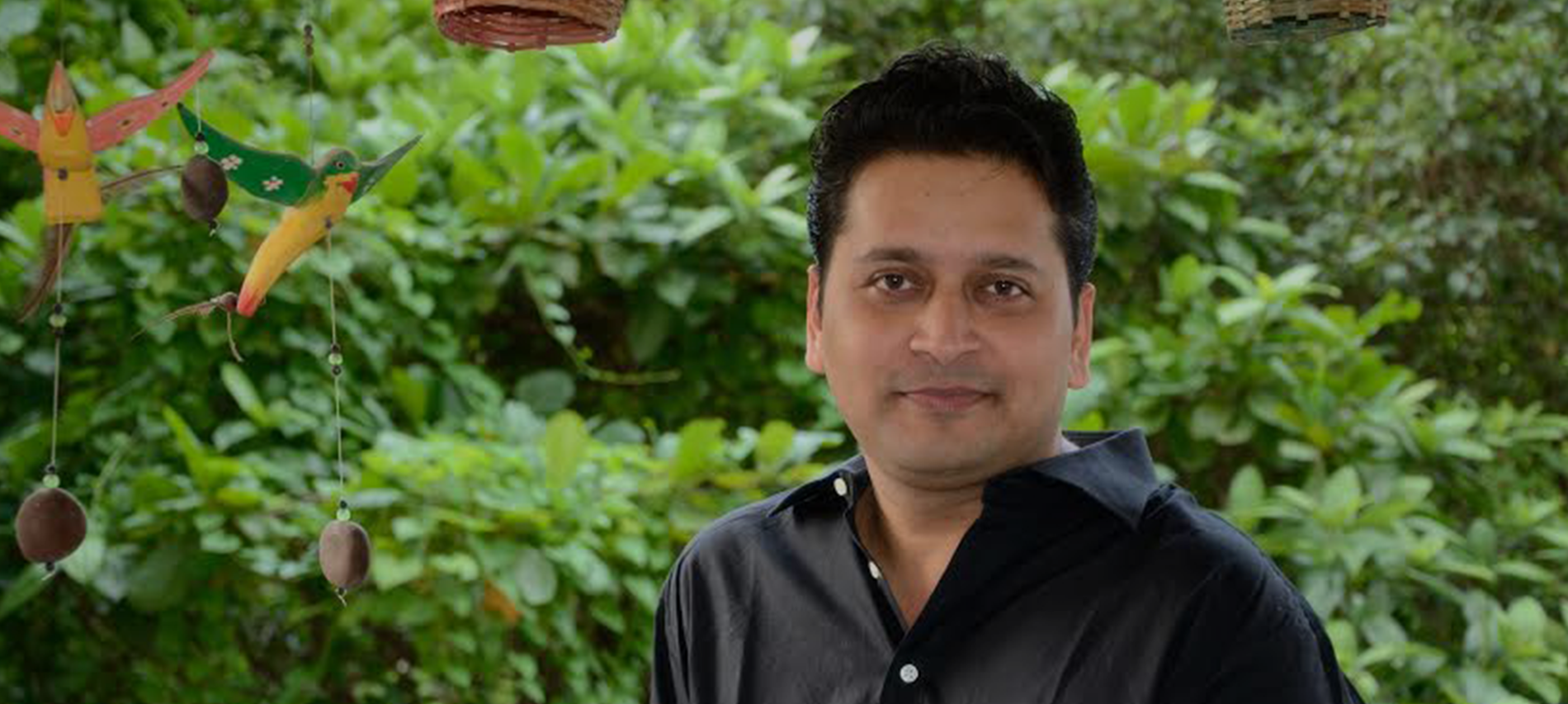Arun Kumar is the country’s leading authority on the black economy. In his recent book Demonetisation and the Black Economy he gives a lucid account of demonetization along with its effects on the economy.
Here are six statements by Prof Kumar which describe impacts and effects of demonetisation.







Tag: Penguin Random House
Competing on Analytics with External Processes
Competing on Analytics provides the road map for becoming an analytical competitor, showing readers how to create new strategies for their organizations based on sophisticated analytics. Introducing a five-stage model of analytical competition, Davenport and Harris describe the typical behaviors, capabilities and challenges of each stage. It is the definitive guide for transforming your company’s fortunes in the age of analytics and big data.
Thomas H. Davenport is the President’s Distinguished Professor of IT and Management at Babson College and a research fellow at the MIT Initiative on the Digital Economy. Jeanne G. Harris is on the faculty at Columbia University, where she teaches Business Analytics Management.
The great challenge for brand managers in the current age, however, is developing a closed loop of analytics describing how customers interact with a brand across multiple channels. With this information, brands can learn not only what ads and promotions customers see, but how they react in terms of click-throughs, conversions, and service. Most companies find it difficult to marshal all this data and make sense of it with analytics.
One company that does do it well, however, is Disney’s Parks and Resorts business unit. The business has long been highly analytical, optimizing hotel prices, ride times, and marketing offers. Now, however, due to a “vacation management” project called MyMagic+ that cost over $1 billion and began in 2008, it is able to close the loop on how all that marketing translates into a customer experience. The ambitious goal of MyMagic+ is to provide a more magical, immersive, seamless and personal experience for every single guest. From the beginning of planning a Disney park or hotels reservation, the customer is encouraged to register and to supply an email address. The customer can plan a family trip (and, at the same time, register all family members or friends participating in the trip) with the MyDisneyExperience website or app. Disney is then able to learn what activities the customer is considering and what web pages engage different family members. Customers are also encouraged to sign up for the FastPass+ service, which offers them shorter wait times; in exchange, they share information about the park attractions, entertainment options, and even greetings from Disney characters they intend to experience.
What really closes the loop for Disney, however, is the MagicBand. Rolled out in 2013, these wristbands are typically mailed to a family before its visit starts. From the customer’s standpoint, it allows access to the park and hotel rooms, FastPass+ entry to attractions at specific times, and in-park and hotel purchases. It also stores photos taken with Disney characters, and allows the characters to have personalized interactions with kids. From Disney’s standpoint, it provides a goldmine of data, including customer locations, character interactions, purchase histories, ride patterns, and much more. If customers opt in, Disney will send personalized offers to them during their stay and after they return home.
The scale and expense of the MyMagic+ system is reflective of the fact that the ante has been raised for competing on analytics. It may take a while for Disney to recoup its billion-dollar investment in this closed loop system, but the company has already seen operational benefits in being able to admit more customers to parks on busy days. There is also a belief that the system will deter customers from visiting competitor parks. Key to the ultimate value of the program, however, will be extensive analytics on how marketing and branding programs translate into actual customer activity.
Find this book:- Competing on Analytics: The New Science of Winning

What is the meaning of fitness?
Shivoham is one of India’s foremost fitness trainers. In his book,‘The Shivfit Way’ he shows how to work out without any equipment or machines. He combines cardio, strength training and weight exercises for a full-body workout. He also offers a whole new perspective on what it means to be fit and how to motivate yourself to start exercising. This book is coauthored by Shrenik Avlani, who is a newsroom veteran with nearly two decades of work experience as a leading writer in the field of endurance sport and fitness.
The Merriam-Webster dictionary defines fitness as ‘the quality or state of being fit’, while fit is defined as ‘sound physically and mentally’. Though the word was first used in 1580 ad, its dictionary definition does not tell us much about what fitness actually is.
We have seen triathletes compete in Ironman races which involve swimming 3.86 kilometres, followed by cycling 180.25 km and then immediately running a full marathon of 42.195 km, being crowned the fittest men and women in the world. but put them in a gym and ask them to lift weights, and you will find that they fare rather poorly. Even a boy or girl of average strength will be able to lift more than the fittest men and women on earth if endurance sport is the measure of fitness, as it mainly enhances the aerobic capacity of an individual.
But walk into a weightlifting clinic or lifter training for the Olympics and you would find the smallest of them lifting much more than their body weight. Lifters usually describe their colleagues as strong, not fit. Now ask them to run a couple of kilometres or swim just 500 metres, you are most likely to see them struggling and gasping for breath pretty quickly. so, strength alone also cannot be a parameter to measure fitness.
Clearly, fitness means different things to different people. Depending on who you ask, fitness is likely to be defined in terms of things people are good at or specialize in. For a runner, being able to run a full marathon in under four hours is being fit. For a body-builder, big muscles are clear indicators of fitness. Then again, talk to weightlifters, and they will tell you that their ability to lift weights three times heavier than themselves is proof of their fitness. For the average person, fitness could mean something as simple as going through an entire day of work and having enough energy to indulge in their hobbies or run and play freely with their kids without feeling exhausted.
In the many years I have spent in this industry, and during the course of my own journey, I have come to realize that no single parameter can measure fitness. several factors measure different attributes of your body, and the ones you pay more attention to depend on which school of fitness you follow. For example, if you believe having sculpted abs is a mark of fitness, then you will strive for low body fat percentage. For others, it could be achieving the ideal weight according to their height and body type.
Since I believe in and practice CrossFit, I follow its founder Greg Glassman’s definition of fitness, which is based on the following ten general physical skills:
Cardiovascular or respiratory endurance: The ability of the body to gather, process and deliver oxygen to its different parts.
Stamina: The ability of the body systems to process, deliver, store and utilize energy.
Strength: The ability of a muscular unit, or combination of muscular units, to apply force.
Flexibility: The ability to maximize range of motion at a given joint.
Power: The ability of a muscular unit, or combination of muscular units, to apply maximum force in minimum time.
Speed: The ability to minimize the time cycle of a repeated movement.
Coordination: The ability to combine several distinct movement patterns into a singular distinct movement.
Agility: The ability to minimize transition time from one movement pattern to another.
Balance: The ability to control the placement of the body’s centre of gravity with regard to its support base.
Accuracy: The ability to control a movement in a given direction or at a given intensity.
Find this book: The Shivfit Way

Reintroduce Yourself
Reinventing You provides a step-by-step guide to help you assess your unique strengths, develop a compelling personal brand and ensure that others recognize the powerful contribution you can make. Branding expert Dorie Clark mixes personal stories with engaging interviews and examples from Mark Zuckerberg, Al Gore, Tim Ferriss, Seth Godin and others to show you how to think big about your professional goals, take control of your career and finally live the life you want.
Small, tangible signals are only part of the battle, however, the biggest challenge is changing your behavior to reflect your new goals and reality. For over a decade, Dan had worked at a large, international technology company, ascending to the rank of engineering director. But when he decided to leave for a newer tech company with a hip reputation, he realized his résumé had some baggage attached. His previous employer was well-known and respected by the public, but in tech circles, it was viewed as an old-line behemoth, resistant to change and full of stuffy bureaucrats, not exactly the image he wanted to project to his new colleagues. “I had to work to get other people to understand I was comfortable in the new environment,” he says. “It’s a grassroots culture, so I had to start building relationships and trust. It was lots of time ‘managing by walking around,’ being as visible as possible. With anything that smacked of a big company, like having a standing staff meeting, I overreacted against it.”
Dan realized he had to make connections quickly to shape his colleagues’ perception of him, but he was starting at a disadvantage. “I discovered my entire personal network was at [my previous employer],” he recalls. “I decided I shouldn’t be in that situation again.” So he embarked on a networking campaign to deepen his connections both inside and outside his new company, and in the process, build a reputation as a forward-thinking, connected executive who understood industry trends. But there was only one problem: his personality.“I’m a fairly introverted guy,”Dan says.“I hate taking these meetings with strangers, the idea of a meeting that’s not going to help me get the job I have in front of me done, or getting to know people without an action item.”
But he forced himself to persist. “I realized it was important, that by the time you need connections, you can’t suddenly make them. You have to be ready.” These days, while his night-owl engineering team is sleeping in, Dan has a steady regimen of breakfast meetings including “people in my industry at other companies, executive search people, leaders at small companies, venture capitalists, a guy who works on corporate turnarounds.” When it comes to making connections, Dan says, “the biggest change is my default answer used to be no, and now my default answer is yes. I’ve focused on reasons to say yes.”
His networking has paid off. He’s now on the pulse of start-ups to acquire and knows which ones are going down (and from which he can poach talent). He’s made himself indispensable to his company and the furthest thing from an old school, bureaucratic manager. In fact, he’s found ways to play with his background and upend expectations. When he discovered his new company required receipts for all travel expenses above $25, whereas his old firm’s threshold was $75, he shook up his colleagues by letting them know it was less bureaucratic at his old company and suggested they change the policy. He recalls with pleasure: “I could use negative branding to my advantage.” And he knows that if he wants to change jobs in the future, he’s positioned himself with the contacts and branding he needs to land securely.
Find this book: Reinventing You

The Making of the Indian Muslim Civilization
Today roughly 500 million Muslims inhabit South Asia, although the process of Islamization began in the eighth century, the region developed a distinct Indo-Islamic civilization that culminated in the Mughal Empire. In the Gulf, while paying lip service to the power centres, including Mecca and Medina, this civilization cultivated its own variety of Islam, which was based on Sufism.
‘The Islamic Connection’ gathers together some of the best specialists on the pan-Islamic ties and explores ideological, educational and spiritual networks, which have gained momentum due to political strategies, migration flows and increased communications.
Revisiting the old notion of ‘acculturation’ from the point of view of the ‘connected history’ school of thought,5 Sanjay Subrahmanyam argues that when civilizations meet, ‘Time and again, then, we are forced to come to terms with a situation that is not one of mutual indifference, or of a turning of backs, or of a deep-rooted incomprehension, but of shifting vocabularies, and changes that are wrought over time by improvisations that eventually come to be part of a received tradition.’ In South Asia, Muslims have invented their own ‘brand’ of Islam soon after their arrival in the region, following their encounter with the dominant civilization, Hinduism.
Certainly, the Caliphate played a role in the initial conquest of South Asian territories by Arabs in the eighth century. It was the Khalifah al-Walid b. ‘Abdul Malik who, hearing that Arab traders had been captured by the ruler of Sind, asked the governor of Baghdad to send an army to liberate them in 711. The soldiers of Muhammad b. Qasim did more than that and conquered the whole of Sind. The social structure of the Muslims of South Asia, who became dominant in spite of their remaining a minority, reflects their attachment to the Arabian peninsula: the upper strata was made of those (the Syed) who claimed that they descended from the Prophet. Another source of prestige came from the accomplishment of the Mecca pilgrimage (the Hajj), the title ‘Hajji’ being affixed to the name of those who had done it.
However, the Muslims who brought Islam to South Asia in a sustainable manner were not those who used the sword to conquer the region and/or who looked back, but the Sufis who made India a sacred land for Muslims, as mentioned in the introduction of this volume, after the establishment of khanqahs (buildings designed for the gathering of Sufis saints’ disciples) and dargahs (tombs of saints) which became major pilgrimage centres.
Not only did Muslims of medieval India distance themselves from the holy cities of Arabia and develop sacred sites across ‘their’ land, they also initiated spiritual relations with the Hindus. While orthodox scholars developed forms of Islamic proselytization in order to convert these ‘infidels’ (kafirs), some Sufis and several Muslim rulers promoted a very substantial spiritual dialogue with Hindus. The encounter of Sufis and Yogis resulted in rich spiritual exchanges.For making possible this dialogue, which reached its culminating point during the Mughal Empire under Akbar, spiritual treaties were translated from Sanskrit to Persian and Arabic. Besides, after 1579, Akbar appeared as a competitor for the Caliph himself as suggested by Sanjay Subrahmanyam:
In early September 1579, a group of theologians, including the Shaikh ul-Islam, were pressurized into signing a text claiming for Akbar a special status of Padshah-i Islam, beyond that even of a Sultan-i Adil. […] one of the epithets used for him was now Mujtahid, as also Imam-i Adil, the latter startlingly close to the usages favoured at one time by Süleyman. Indeed, the challenges was directed in good measures at the Ottomans, who had claimed superior status as the Khalifas of the east, with their conquest of Egypt.
These words and the spiritual innovations of Akbar reflected the great autonomy of the Indo-Islamic civilization vis-à-vis West Asia, including the holy cities of the Arabian peninsula and Istanbul, the seat of the Caliphate. But the fact that Akbar claimed that he was a kind of Caliph also shows that the Indian Muslims were deeply attached to the idea of the Caliphate, that they somewhat tried to replicate. And when the Mughal Empire started to wane, the attitude of the Muslim Indians towards the Ottomans changed.
Local Muslim rulers threatened by the Europeans turned to the Ottoman Sultan for help and recognition in the eighteenth century, including those of the Malabar coast and Tipu Sultan, the warlord of southern India who put up the most successful resistance to the British. Tipu Sultan sent an ambassador to Constantinople in 1785 requesting that he bring back a letter of investiture from the Ottoman Sultan and military support. He got the former, but not the latter. The declining Mughal dynasty also turned towards the Ottoman Sultan. In fact, the less power the dynasty retained, the more Indian Muslims turned to the Caliph as their protector. In the first half of the nineteenth century, ‘the name of the Ottoman sultan definitely came to be mentioned in the Friday khutba in some Indian mosques.’ Gradually, Indian ulama recognized the Ottoman sultans as the holder of the universal caliphate. This trend reached its logical conclusion after the last Mughal Emperor, Bahadur Shah II (1775–1862) was deposed and exiled to Rangoon in the wake of the 1857 Mutiny which marked the final phase of the Mughal decline.
Find this book: The Islamic Connection: South Asia and the Gulf

5 Quotes From Harlan Coben’s New Book That Make it a Must-Read
Harlan Coben is one of the most famous names in the world of thrillers. He is the bestselling author of novels like The Stranger, Home, Fool me once, etc. With over 70 million books in print worldwide, his novels have been published in 43 languages worldwide.
He is back with another spine-chilling gem, Don’t Let Go which revolves around mistaken identities, dark family secrets, and mysterious conspiracies.
Here are five quotes from the book which make it unputdownable.





Don’t wait anymore and pick up this gem now!

5 Things You Didn’t Know About Harlan Coben
Harlan Coben is one of the most well-known names in the thriller genre. With over 70 million books in print worldwide, his books have been number one bestsellers in over a dozen countries. Here are 5 things you should know about the bestselling author.
Here are 5 things you should know about the bestselling author.





How many of these facts did you know?
Meet the characters from ‘Turtles All the Way Down’
Renowned author John Green is back with his latest YA novel Turtles All the Way Down. In this novel, Green shares Aza Holmes, a young woman navigating daily existence within the ever-tightening spiral of her own thoughts. The novel is also about lifelong friendship, the intimacy of an unexpected reunion, Star Wars fan fiction and tuatara.
Here are the characters from this long-awaited novel:
Aza Holmes

Daisy Ramirez

Mychal Turner

Davis Pickett

Noah Pickett

Russell Pickett

Which character did you find interesting?
Get John Green’s Turtles All The Way Down here.
Things You Should Know About Pankaj Dubey
Pankaj Dubey is the bestselling author of three novels. He is also a film-maker. His recent novel Love Curry is about three flatmates in London who fall in love with the same girl. They become arch rivals, but when their worlds turn topsy-turvy, they have no one but each other to turn to, learning that love is as much about letting go as it is about possessing.
Here are six things you should know about the author:






Catch Pankaj Dubey’s quirky and intense novel Love Curry.

9 lines that Show the Anguish Behind Mental Illness
Shreevatsa Nevatia’s How to Travel Light is a candid take at his life after he was diagnosed as bipolar at twenty-three, and how he struggled for a decade, fighting a cycle of depression and euphoria.
Here are a few lines from the book which display this struggle:









Combat your inner anguish with this book.

















